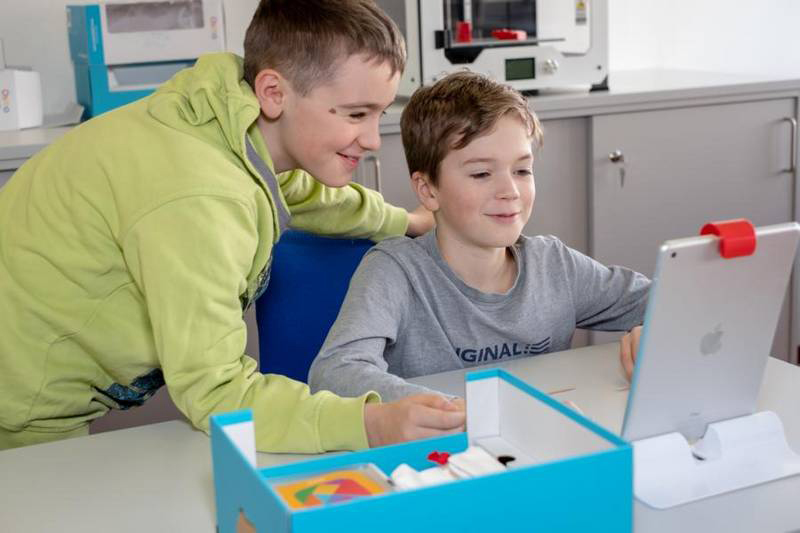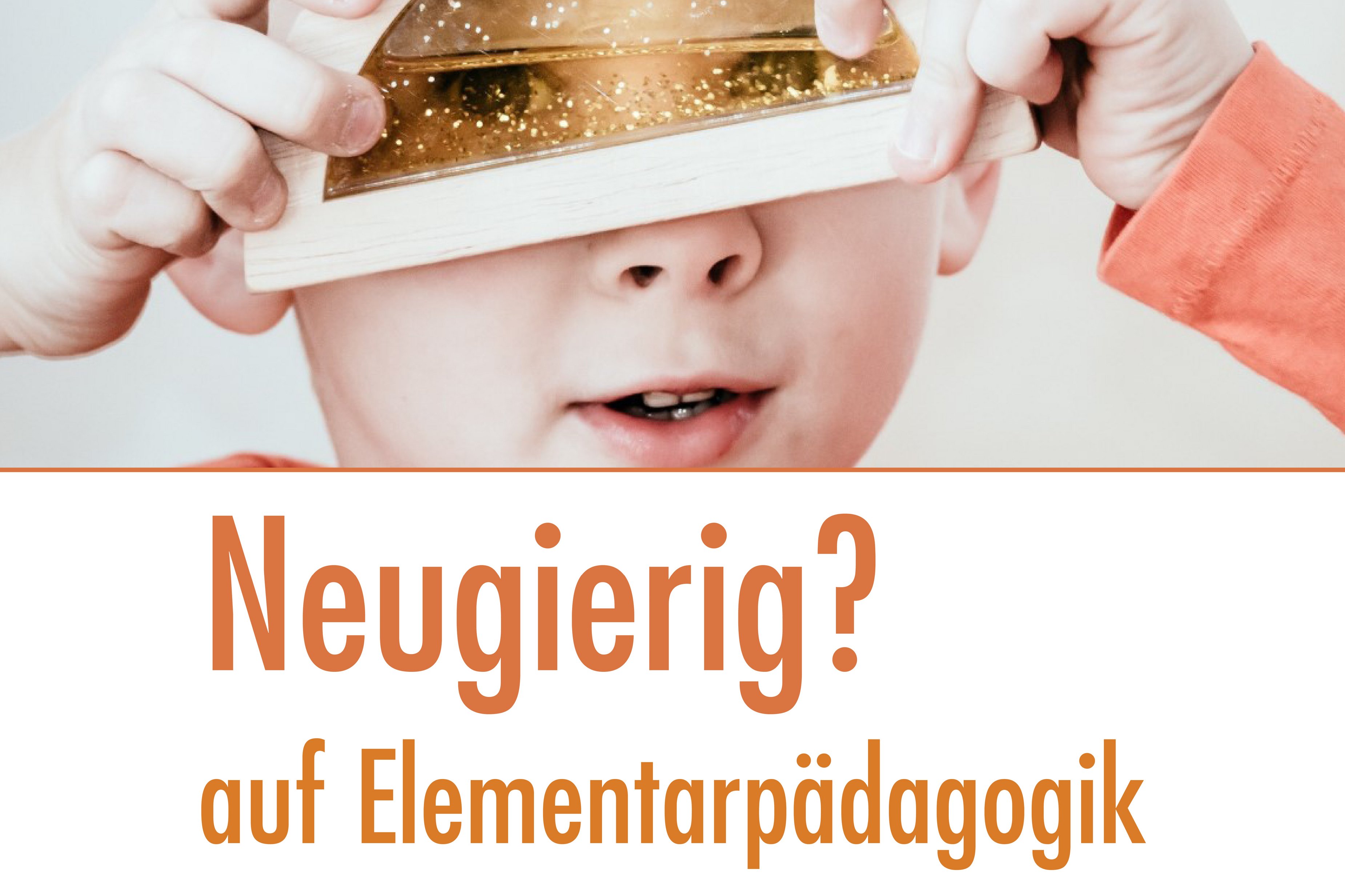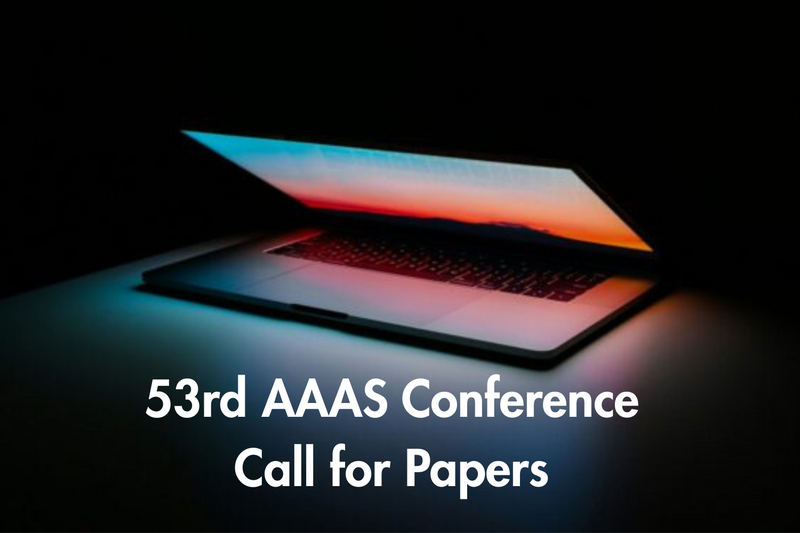HS-Prof. Dr. habil. Katharina Hirschenhauser
Hochschulprofessorin

Biologie mit Fokus auf Verhaltensbiologie und Zoologie in den Lehramtsstudien der Sekundarstufe (FW/FD mit dem Schwerpunkt empirische Forschung)
Kontakt
- Wissenschaftliches Arbeiten, Forschung
- Biophilie, Einsatz von Tieren in der Schule
- Resilienz: Stress und Lernen
- Fachdidaktik Biologie
2013 Habilitation an der Universität Wien
Seit 2012 – Hochschulprofessorin an der Pädagogischen Hochschule OÖ
2009 – 2011 Visiting scientist am Max Planck Institut für Ornithologie (MPIO), Seewiesen, Deutschland
Seit 2005 – Lektorin an der Universität Wien
2003 – 2006 Post-Doc an der Konrad Lorenz Forschungsstelle Grünau (KLF) / Universität Wien
1999 – 2002 Post-Doc am Instituto Superior de Psicología Aplicada (ISPA), Lissabon, Portugal
1999 Doktorat (PhD) KLF Grünau / Universität Wien
1995 Diplom (MSc) Universität Wien
Auszeichnungen / Preise
2012 ‘For Women in Science‘
verliehen durch L’Oréal Österreich und die Österreichische Akademie der Wissenschaften
2010 – 2012 ‘Focus of Excellence’ der Fakultät für Lebenswissenschaften, Universität Wien
2010 ‘Niko Tinbergen Preis‘ der Ethologischen Gesellschaft e.V.
2009 Alexander von Humboldt Fellow
Advisory Editor Acta Ethologica (Springer Verlag)
https://www.researchgate.net/profile/Katharina_Hirschenhauser
Informationsbroschüre
Hirschenhauser K, Grünschachner-Berger V, Reisegger-Röck C, Hutterer M 2020. Was macht ein Hund im Klassenzimmer - Wirksamkeit von Hunden in der Schule.Linz: PH OÖ.
[Supplementary online material: https://ph-ooe.at/schulhunde]
Übersetzte Ausgabe ins Türkische: Köpek sınıfta ne arıyor? Okuldaki köpeklerin etkinliği
Übersetzte Ausgabe ins Arabische: عـالية الكلاب في المدرسة ماذا يفعل الكلب في الصف؟.
Herausgeberband
Feyerer E, Hirschenhauser K, Soukup-Altrichter K, Hrsg., 2014. Last oder Lust:Forschung und Lehrer_innenbildung. Beiträge zur Bildungsforschung, Band 1, Waxmann Verlag.
Buchbeiträge
Steiner R, Hirschenhauser K, Fritz I (2023). MINT & Mädchenförderung – Curricula-Analyse Lehramt. In (A Schnider, ML Braunsteiner, I Bruner, C Hansen, B Schober, C Spiel, Hrsg.) PädagogInnenbildung – Evaluationen und Analysen, pp 483-537. Be+Be Verlag.
Hirschenhauser K, Frigerio D, Neuböck-Hubinger B (2022). Science education and beyond: citizen science in primary school potentially affects conceptual learning and socio-emotional development. In (M. Ampartzaki & M. Kalogiannakis, Eds.) Pedagogy, Learning, and Creativity. InTech Open. http://dx.doi.org/10.5772/intechopen.107532
Neuböck-Hubinger, B & Hirschenhauser, K 2019. Animal magnetism: Belebte Natur im naturwissenschaftlichen Sachunterricht. In (B Neuböck-Hubinger, R Steiner, B Holub & C Egger, Hrsg.) Sachunterricht in Bewegung – Einblicke und Ausblicke zur Situation der Sachunterrichtsdidaktik in Österreich, pp 71-80. Verlag Schneider Hohengehren.
Schermaier A, Weisl H, Hirschenhauser K 2019. bio@school 6 - Lehrplan 2018. Linz: Veritas Verlag (Schulbuch Nr. 180.755)
Hirschenhauser K 2018. Neurophysiologie von Emotionen im pädagogischen Kontext. In (M Huber & S Krause, Hrsg.) Bildung und Emotion, pp 195-211. Springer Verlag.
Hirschenhauser K & Neuböck-Hubinger B 2017. Biophilie – das Interesse am Lebendigen im Unterricht nutzen. In (S Lochner et al.) Jubiläumsband 10 Jahre Pädagogische Hochschule Oberösterreich, pp 46-47.
Schermaier A, Weisl H, Hirschenhauser K 2017. bio@school 6 - Lehrplan 2017. Linz: Veritas Verlag (Schulbuch Nr. 180.755)
Schermaier A, Weisl H, Hirschenhauser K 2015. bio@school 6. Linz: Veritas Verlag (Schulbuch Nr. 170.11.8)
Hirschenhauser K, Fischer H, Buhrow, H, Kotrschal K 2013. Goose research then and now: ethology in flux. In (IBR Scheiber, BM Weiß, J Hemetsberger, K Kotrschal, Eds.) The Social Life of Geese, chapter 2. Cambridge University Press
Nedelcu I, Hirschenhauser K 2013. Maintenance of the monogamous pair bond. In (IBR Scheiber, BM Weiß, J Hemetsberger, K Kotrschal, Eds.) The Social Life of Geese, chapter 4. Cambridge University Press
Kotrschal K, Scheiber IBR, Hirschenhauser K 2010. Individual performance in complex social systems: the greylag example. In (P Kappeler, Ed.) Animal Behaviour: Evolution and Mechanisms, chapter 5. Springer Verlag, pp 119-148.
Hirschenhauser K, Frigerio D 2005. Hidden patterns of male sex hormones and behavior vary with life history. In (L Anolli, G Riva, S Duncan Jr, MS Magnusson, Eds) The Hidden Structure of Interaction: from Neurons to Culture Patterns, chapter 5. Amsterdam: IOS-Press, pp 82-96.
Oliveira RF, Ros AFH, Hirschenhauser K, Canário AVM 2001. Androgens and mating systems in fish: Intra- and interspecific analyses. In (Goos HJT, Rastogi RK, Vaudry H, Pierantoni R, Eds.) Perspectives in Comparative Endocrinology: Unity and Diversity. Monduzzi Editore Sorrento (Napoli), Italy: pp 985-993.
Artikel in Fachzeitschriften (peer-reviewed)
Fischer S, Ferlinc Z, Hirschenhauser K, Taborsky B, Fusani L, Tebbich S (2024). Does the stress axis mediate behavioural flexibility in a social cichlid, Neolamprologus pulcher? Physiology & Behavior, 287, 114694. https://www.sciencedirect.com/science/article/pii/S0031938424002427?via%3Dihub
Nowak E, Heidinger C, Hirschenhauser K (2024). Ursachen und Folgen: Antworten auf Fragen nach dem „Warum“ in der Biologie entlang einer Zeitachse strukturieren. MNU Journal 03/2024, 204-208. https://www.mnu.de/publikationen/mnu-journal
Nowak E, Heidinger C, Hirschenhauser K (2024). Warum reagieren Katzen so komisch auf Gurken. Online-Ergänzung zu Ursachen und Folgen, MNU Journal 03/2024, https://www.mnu.de/publikationen/mnu-journal
Hirschenhauser K, Brodesser L 2023. Children’s relationships with a non-vertebrate animal: the case of a Giant African Land Snail (Achatina fulica) at school. Animals 13(9), 1575. https://doi.org/10.3390/ani13091575
Neuböck-Hubinger B, Grubner K, Frigerio D, Hirschenhauser K 2021. Natural science education - a claim for equality, diversity and inclusion in citizen science activities. Proceedings of SciencePoS (ACSC2020), 018. https://pos.sissa.it/393/018/pdf
Hirschenhauser K, Frigerio D, Leithinger V, Schenkenfelder I, Neuböck-Hubinger B 2019. Primary pupils, science and a model bird species: Evidence for the efficacy of extracurricular science education. PLoS One 14, e0220635. http://dx.plos.org/10.1371/journal.pone.0220635
Frigerio D, Pühringer-Sturmayr V, Neuböck-Hubinger B, Gegendorfer G, Kotrschal K, Hirschenhauser K 2019. Monitoring public awareness about the endangered northern bald ibis: a case study involving primary school children as citizen scientists. PeerJ 7, e7569. http://doi.org/10.7717/peerj.7569
Voigt C, Hirschenhauser K, Leitner S 2018. Neural activation following offensive aggression in Japanese quail. Biology Open 7, bio038026. http://bio.biologists.org/content/7/12/bio038026
Hirschenhauser K, Meichel Y, Schmalzer S, Beetz AM 2017. Children love their pet - do relationships between children and pet co-vary with phylogenetic distance, gender and age? Anthrozoös 30(3), 441-456. http://www.tandfonline.com/doi/abs/10.1080/08927936.2017.1357882
Neuböck-Hubinger B, Aschauer M, Breitwieser I, Schwarz T, Bisenberger A & Hirschenhauser K 2016. Lehramtsstudierende erforschen den Einsatz von lebenden Tieren und Pflanzen im Sachunterricht. Gesellschaft für Didaktik des Sachunterrichts, GDSU Journal 5, 41-54.
Hirschenhauser K, Schietz J, Waldl G 2016. Grafomotorische Förderung - auch späte Förderung zeigt noch Wirkung auf Schriftbild und Schreibmotivation. Forschungsperspektiven 8, 159-174.
Hirschenhauser K, Gürtler H, Millesi E 2016. Salivary cortisol patterns in nine-year old children - testing the effects of daily exercises on school-related stress load. EthoNews 74, 8-13.
Hirschenhauser K, Gahr M, Goymann W 2013. Winning and losing in public. Audiences direct future success in Japanese quail. Hormones and Behavior 63, 625-633.
Hirschenhauser K 2012. Testosterone and partner compatibility: evidence and emerging questions. Ethology 118, 799-809. (invited review)
Hirschenhauser K, Spreitzer K, Lepschy M, Kotrschal K, Möstl E 2012. Excretion patterns of corticosterone metabolites differ between two galliform species, Japanese quail and chicken. Journal of Ornithology 153, 1179-1188.
Hirschenhauser K, Weiß BM, Haberl W, Möstl E, Kotrschal K 2010. Female androgen patterns and within-pair testosterone compatibility in domestic geese (Anser domesticus). General and Comparative Endocrinology 165, 195-203.
Soares MC, Bshary R, Fusani L, Goymann W, Hau M, Hirschenhauser K, Oliveira RF 2010. Hormonal mechanisms of cooperative behaviour. Philosophical Transactions Royal Society B 365, 2737-2750.
Weiß BM, Kotrschal K, Möstl E, Hirschenhauser K 2010. Social and life-history correlates of hormonal partner compatibility in greylag geese (Anser anser). Behavioural Ecology 21, 138-143.
Bertin A, Hirschenhauser K, Kotrschal K 2009. Trans-generational influence of human disturbances in Japanese quail: egg quality influences male social and sexual behaviour. Ethology 115, 879-887.
Weiß BM, Poggemann K, Olek K, Foerster K, Hirschenhauser K 2008. Isolation and characterization of microsatellite marker loci in the greylag goose (Anser anser). Molecular Ecology Resources 8, 1411-1413.
Hirschenhauser K, Wittek M, Johnston P, Möstl E 2008. Social context rather than behavioral output or winning modulates post-conflict testosterone responses in Japanese quail (Coturnix japonica). Physiology and Behavior 95, 457-463.
Bertin A, Richard-Yris MA, Houdelier C, Lumineau S, Möstl E, Kuchar A, Hirschenhauser K, Kotrschal K 2008. Habituation to humans affects yolk steroid levels and offspring phenotype in quail. Hormones and Behavior 54, 396-402.
Hirschenhauser K, Canário AVM, Ros AFH, Taborsky M, Oliveira RF 2008. Social context may affect urinary excretion of 11-ketotestosterone in African cichlids. Behaviour 145, 1367-1388.
Scott AP, Hirschenhauser K, Bender N, Oliveira RF, Earley RL, Sebire M, Ellis T, Pavlidis M, Hubbard PM, Huertas M, Canário AVM 2008. Non-invasive measurement of steroids in fish-holding water: important considerations when applying the procedure to behaviour studies. Behaviour 145, 1307-1328.
Garamszegi LZ, Hirschenhauser K, Bokony V, Eens M, Hurtrez-Bousses S, Møller AP, Oliveira RF, Wingfield JC 2008. Latitudinal distribution, migration and testosterone levels in birds. American Naturalist 172, 533-546.
Bokony V, Garamszegi LZ, Hirschenhauser K, Liker A 2008. Testosterone and melanin-based black plumage coloration: a comparative study. Behavioral Ecology and Sociobiology 62, 1229-1238.
Scheiber IBR, Weiß BM, Hirschenhauser K, Wascher CAF, Nedelcu IT, Kotrschal K 2007. Does 'relationship intelligence' make big brains in birds? The Open Biology Journal 1, 6-8. https://www.ncbi.nlm.nih.gov/pmc/articles/PMC3188405/
Hirschenhauser K, Oliveira RF 2006. Social modulation of androgens in male vertebrates: meta-analyses of the ‘challenge hypothesis’. Animal Behaviour 71, 265-277.
Hirschenhauser K, Kotrschal K, Möstl E 2005. A synthesis of measuring steroid metabolites in goose feces. Annals NY Academy of Sciences 1046, 138-153.
Goymann W, Moore IT, Scheuerlein A, Hirschenhauser K, Grafen A, Wingfield JC 2004. Testosterone in tropical birds: effects of environmental and social factors. American Naturalist 164, 327-334.
Hirschenhauser K, Taborsky M, Oliveira T, Canário AVM, Oliveira RF 2004. A test for the ‘challenge hypothesis’ in cichlid fish: simulated partner and territory intruder experiments. Animal Behaviour 68, 741-750.
Frigerio D, Hirschenhauser K, Möstl E, Dittami J, Kotrschal K 2004. Experimentally elevated testosterone increases status signalling in male Greylag geese (Anser anser). Acta Ethologica 7, 9-18.
Hirschenhauser K, Winkler H, Oliveira RF 2003. Comparative analyses of male androgen responsiveness to social environment in birds: the effects of mating system and paternal incubation. Hormones and Behavior 43, 508-519.
Oliveira RF, Hirschenhauser K, Canário AVM, Taborsky M 2003. Androgen levels of reproductive competitors in a cooperatively breeding cichlid. Journal of Fish Biology 63, 1615-1620.
Oliveira RF, Hirschenhauser K, Carneiro LA, Canário AVM 2002. Social modulation of androgen levels in male teleost fish. Comparative Biochemistry and Physiology B 132, 203-215.
Hirschenhauser K, Frigerio D, Grammer K, Magnusson MS 2002. Monthly patterns of testosterone and behavior in prospective fathers. Hormones and Behavior 42, 172-181.
Ros AFH, Hirschenhauser K, Oliveira RF 2001. The interaction of activational and organizational effects of early androgens on aggression in juvenile birds: A reply to Saszvàri et al. Ethology 107, 851-853.
Hirschenhauser K, Möstl E, Wallner B, Dittami J, Kotrschal K 2000. Endocrine and behavioural responses of male Greylag geese (Anser anser) to pairbond challenges during the reproductive season. Ethology 106, 63-78.
Hirschenhauser K, Peczely P, Möstl E, Wallner B, Dittami J, Kotrschal K 2000. Seasonal relationships between plasma and fecal testosterone in response to GnRH in domestic ganders. General and Comparative Endocrinology 118, 262-272.
Kotrschal K, Dittami J, Hirschenhauser K, Möstl E, Peczely P 2000. Effects of physiological and social challenges in different seasons on fecal testosterone and corticosterone in male domestic geese (Anser domesticus). Acta Ethologica 2, 115-122.
Hirschenhauser K, Möstl E, Kotrschal K 1999. Seasonal patterns of sex steroids determined from feces in different social categories of Greylag geese (Anser anser). General and Comparative Endocrinology 114, 67-79.
Hirschenhauser K, Möstl E, Kotrschal K 1999. Within-pair testosterone covariation and reproductive output in Greylag geese (Anser anser). Ibis 141, 577-586.
Kotrschal K, Hirschenhauser K, Möstl E 1998. Social stress and dominance: the relation is seasonal in Greylag geese (Anser anser). Animal Behaviour 55, 171-176.
Publizierte Abstracts internationaler Konferenzbeiträge
Hirschenhauser K, Pfarrhofer L 2021. Relationships of children with their Giant African snail at school. 30th ISAZ Conference, http://www.isaz.net/isaz/conferences/#upcon
Hirschenhauser K, Frigerio D, Neuböck-Hubinger 2016. Wirkungen außerschulischer Angebote im Sachunterricht: das Waldrapp-Projekt. transfer Forschung<>Schule 2, 307-308.
Jäger N, Hirschenhauser K 2014. Stress hormone patterns in 9-years old children during dog-assisted reading. International Society for Anthrozoology (ISAZ), www.posters.isaz.net .
Zechner L, Hammer K, Hirschenhauser K, Pfeifer M, Grünschachner-Berger V 2009. Census and monitoring of bird species in the national park Gesäuse, Austria. Proceedings of the 4th Symposion for Research in Protected Areas, Kaprun, Austria
Weiß BM, Möstl E, Hirschenhauser K 2005. Within-pair testosterone compatibility as a currency for pairbond quality in Greylag geese? Hormones and Behavior 48, 133-134
Moore IT, Goymann W, Scheuerlein A, Hirschenhauser K, Grafen A, Wingfield JC 2004. Testosterone in tropical birds: How high and why? Integrative and Comparative Biology 44, 609
Hirschenhauser K, Oliveira RF 2004. Androgen responsiveness to the social environment: a comparative approach. Hormones and Behavior 46, 131-132
Oliveira RF, Silva A, Hirschenhauser K, Canário AVM 2003. Experiential effects and androgens in a cichlid fish. Hormones and Behavior 44, 67
Hirschenhauser K, Ros AFH, Carneiro LC, Oliveira T, Silva A, Canário AVM, Oliveira RF 2002. Non-invasive hormone assessment from fish-holding water. Advances in Ethology 37, 139
Hirschenhauser K, Winkler H, Oliveira RF 2001. Comparative analyses of the social modulation of androgens: The effects of mating and paternal care among birds and other vertebrates. Advances in Ethology 36, 75
Hirschenhauser K, Winkler H, Oliveira RF 2001. The ‚challenge hypothesis’ revisited: control for phylogeny. Hormones and Behavior 39, 333
Ros AFH, Carneiro LAC, Hirschenhauser K, Canário AVM, Oliveira RF 2000. Measuring hormones from fish-holding water. Trabajos Inst. Cajal 77, 153
Hirschenhauser K, Oliveira RF 2000. The ‘challenge hypothesis’ revisited: a meta-analysis. Trabajos Instituto Cajal 77, 305
Kotrschal K, Hirschenhauser K, Möstl E, Peczely P 1999. Testosterone and corticosterone determination from feces in geese yields biologically relevant results. Advances in Ethology 34, 207
Hirschenhauser K, Möstl E, Kotrschal K 1999. Faecal analysis of androgens and its relevance for the study of social behaviour and reproductive success in Greylag geese (Anser anser). Advances in Ethology 34, 206
Frigerio D, Hirschenhauser K, Wallner B, Kotrschal K 1997. Experimentally increased testosterone affects behaviour and corticosterone in male greylag geese. Advances in Ethology 32, 59
Hirschenhauser K, Dittami J, Möstl E, Wallner B, Kotrschal K 1997. Testosterone and behaviour during different phases of reproduction in greylag geese (Anser anser). Advances in Ethology 32, 61.
Beiträge in Zeitschriften
Hirschenhauser K, Severin S 2022. Diskriminierung? Bei uns doch nicht! Das Magazin der pädagogischen Hochschule OÖ Jg. 6/01, p 20.
Kanz C, Hametner S, Hirschenhauser K 2021. Corona. Redaktionsteam: Das Magazin der pädagogischen Hochschule OÖ Jg. 5/01.
Hirschenhauser K, De Jong N 2020. Frauenförderung und Gleichstellung - Transparente Prozesse sichern Fairness und Zukunftsperspektiven. Magazin der Pädagogischen Hochschule OÖ Jg.4/01, p 22.
Prammer-Semmler E, Hirschenhauser K 2019. Von der Elementarisierung der Mehlwürmer - Vernetztes biologisches Wissen und wertvolle Lerngelegenheiten. Magazin der Pädagogischen Hochschule OÖ Jg.3/01, 12 .
Forschung Primarstufe
- Androsch Getrude
- Böhm Jan
- Fahrenwald Claudia
- Feyerer Ewald
- Feyerer Jakob
- Gahleitner Simone
- Grinner Karin
- Hametner Stephan
- Hirschenhauser Katharina
- Holz Christoph
- Leitner Martin
- Michal Alexandra
- Mohrs Thomas
- Moser Claudia
- Neuböck-Hubinger Brigitte
- Plaimauer Christine
- Pögl Uwe
- Rebhandl Reinhold
- Steiner Regina
- Steinermair Gabriele
- Wagner Thomas
- Zauner Norbert
- Zwicker Thomas






